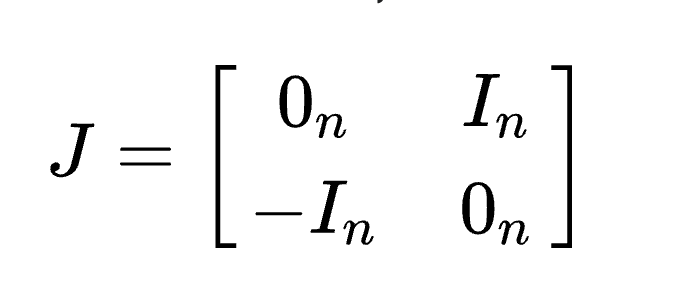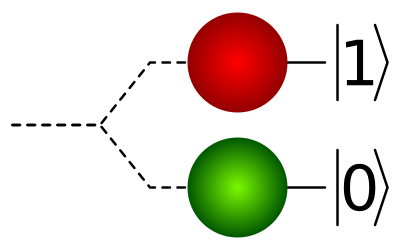Building a Quantum Computer
Chapter 2 of Quantum Computing Series. Discussion about building a quantum computer and what it takes, with Joel Pendleton of Conductor Quantum
About the Quantum Computing Series
Understanding quantum computing requires understanding multiple disciplines. That’s why I’m so drawn to write about this topic, but also why I like to invite experts to the discussion. In this chapter, I talk to Joel Pendleton, who withdrew his Oxford PhD to build Conductor Quantum - a company creating quantum computers on silicon chips.
Enjoy the reading & see the complete Quantum Computing Series listed at the conclusion of this post.
Building a Quantum Computer
Not surprisingly, building a quantum computer requires being an expert across multiple scientific and engineering disciplines.
At its core is what is usually called a two-level quantum system that forms the qubit - that’s what we need for the quantum computer to function. The quantum system can be, for example, an electron's spin (up/down) or an atom's energy levels. In quantum mechanics, particles can exist in different energy states. The quantum systems are mathematically described by the Hamiltonian, a matrix that defines their energy states and time evolution.
Matrices are a natural object for representing quantum systems, because mathematically, they represent how vectors are transformed. And quantum states are described as vectors in an abstract mathematical space (Hilbert space). Mathematically, the state can be written as a superposition of these two basis states of the system with probability amplitudes c1,c2:
The probability amplitudes (c1 and c2 in the picture) are complex numbers because they need to capture both the magnitude and phase information of a quantum state. Complex numbers naturally live in two-dimensional space, so we can use them to capture these two different aspects of quantum space.
The Hamiltonian matrix is then intuitively something like a"flow field" that tells you how quantum states transforms over time.

That’s just a quick mathematical overview, but the journey from theory to a working quantum computer involves not just creating qubits but also precise measurements, corrections, and engineering the whole system to scale while maintaining quantum coherence. And it all requires a lot of specialized materials, extreme cooling, and custom electronics.
These are the steps to building a quantum computer:
Creating qubits: As mentioned, the first requirement is developing a physical system with two distinct quantum states that can exist in superposition.
Quantum state control: Now we need to manipulate these qubits to perform quantum operations.
Measurement systems: After quantum operations are performed, the system needs reliable methods to read out the final quantum state without causing excess decoherence.
Error correction: Quantum systems are highly susceptible to errors from environmental interactions. Effective error correction requires encoding quantum information across multiple physical qubits to create protected logical qubits.
Scaling: Designing systems that can scale to hundreds or thousands of qubits.
The setup for building and scaling a quantum computer always needs to maintain a few necessary conditions called DaVicenzo’s criteria.
Reading
Two-state quantum system on Wikipedia
Hamiltonian (quantum mechanics) on Wikipedia
DaVincenzo’s criteria on Wikipedia
Superconducting Qubits and the Physics of Josephson Junctions by John M. Martinis and Kevin Osborne
Discussion with Joel
Before we discuss building a quantum computer, what properties does it need to have, from a Physics point of view?
One way of creating a quantum computer is to form a two-level system that's well-isolated from other energy states. These two distinct energy levels represent the |0⟩ and |1⟩ states of our qubit. For comparison, in classical computers, a bit (binary digit), characterized as 0 or 1, is used to represent information.

Most quantum systems naturally have multiple energy levels, not just two. For quantum computing, we need to isolate just two of these levels. This is where the Hamiltonian becomes essential. Hamiltonian is a mathematical operator that describes the energy structure of our quantum system and guides our engineering efforts to create properly isolated two-level systems.
There are standard criteria for a quantum computer to work. How challenging are to they follow?
The quantum computing field uses DiVincenzo's criteria as the standard checklist for viable quantum computers. These criteria define the necessary conditions for a working quantum system.

Every type of quantum computing has different challenges. For example for semiconductor quantum computers using spin qubits, most criteria are satisfied, but we face challenges with criteria two and four. The fourth criterion concerns error rates during operations.
Spin qubits are challenging because they use individual electrons (or holes) as their fundamental unit of quantum information. Each qubit is formed by trapping a single electron in a tiny nanoscale-sized structure called a quantum dot, and using the electron's intrinsic spin property (which can be either "up" or "down") to represent the 0 and 1 states. It's a simple approach that uses nature's built-in two-level system, but these tiny electrons are super sensitive to everything around them - stray fields, nearby materials, other electrons - making them prone to errors and losing their quantum state.
The advantages of spin qubits include their small size and compatibility with existing semiconductor manufacturing techniques, potentially allowing billions of qubits on a single chip. However, controlling these individual electron spins with sufficient precision remains one of the field's major technical hurdles.
You're building Conductor Quantum. How do you address the problem of quantum particle errors?
Everyone has qubits, and many different platforms—superconducting circuits, neutral atoms, photonics, ion traps, or semiconductor spin qubits. We are focused on semiconductor-based quantum computers.
Our selling point as a company is that we're developing software, a control system that allows us to automatically trap the electrons to perform operations on them as spin qubits.
Let’s talk about the manufacturing problems now. Silicon is not a scarce material, so what’s the bottleneck of producing a quantum computer, let’s say of the semiconducting type of quantum, which your company is focusing on?
The devices (the silicon chips, e.g., the quantum processing units) themselves are relatively inexpensive—perhaps a few dollars each when fabricated on silicon wafers containing trillions of potential devices. The key difference from conventional chips is that we need to transform individual transistors into qubits with quantum properties.
I mentioned wafers - a wafer is a thin slice of crystalline silicon that serves as the foundation for chip manufacturing. These circular discs (typically 200-300mm in diameter) are the base material on which we build integrated circuits. A single wafer can contain thousands of individual "devices" or chips.

The bottleneck in semiconductor quantum computing isn't silicon availability but rather the precise engineering needed to maintain quantum properties at scale. While standard transistors can tolerate minor defects, quantum devices demand extraordinary purity and precision, as even tiny variations in materials or fabrication can destroy fragile quantum states.
This creates a paradox with spin qubits: the same properties that make electrons excellent qubit candidates—their small size and quantum nature—also make them extremely sensitive to environmental disturbances and difficult to control. Manufacturing must therefore achieve precision far beyond the classical computer chip standards, with transistor-like structures that are nearly perfect at the atomic level.
The specialized equipment needed to measure and calibrate these quantum properties further complicates the process. So despite our theoretical ability to produce billions of devices on standard silicon wafers using established manufacturing techniques, making sure that each device functions as a reliable qubit with consistent quantum behavior remains the big challenge in bringing this technology to scale.
Do you think the sensitivity to errors of electrons is the reason Microsoft went in the topological quantum computing direction, instead of choosing something more “mainstream” like superconducting? Microsoft uses the Majorana fermions and quasi-particles instead of particles, which are just immune to noise thanks to topological properties, so the biggest benefit is dealing with the errors, right?
Yes, that is the idea. In conventional quantum computing, we need many “physical qubits” (e.g., superconducting circuits, trapped ions, or electrons trapped in quantum dots) to create a single error-protected “logical qubit” because individual qubits are extremely fragile. Microsoft's topological approach uses Majorana fermions as the physical qubits. Majorana fermions are exotic quasiparticles that store quantum information in a fundamentally different way.
If you can try to get rid of the errors, then it can save a lot of headaches. There may still be unforeseen problems with the topological approach, but mathematically, in theory there's less of a requirement for error correction if you choose this direction.
Your company, Conductor Quantum, is also pursuing maybe a less mainstream type, especially compared to superconductors. You’re working on semiconductor quantum computing with spin qubits. With this approach, how does manufacturing work? Are you just using the same manufacturers as the “classical” chips?
Yes, traditional foundries such as Global Foundries, and R&D foundries such as Imec and CEA-Leti are already doing tapeouts for silicon quantumc chips. There are also startups, that are focusing solely on producing silicon quantum processing units and cryoCMOS such as SemiQon.
Intel Semiconductor Foundry. Source
Recent research shows increasing use of industry-standard wafers for quantum dots, and better methods for characterizing these devices are emerging—signs that scaling spin qubits may become more practical in the future. (Quantum dots are nanoscale semiconductor structures that trap individual electrons. These electrons allow us to isolate and control the spin states of electrons, turning them into qubits for quantum computing.)
Read more of the Quantum Computing Series:
Chapter 1: Microsoft And Google's Quantum Launches
Chapter 2: Building a Quantum Computer
Chapter 3: Types of Quantum Computers
Chapter 4: Quantum Computers Market Landscape
Chapter 5: Topological Quantum Computers Explained
Resources to start with quantum computing
What Quantum Computing Isn't by Scott Aaronson
Learn the Algorithms Behind Quantum Computing by Beau Carnes
Landscape of Quantum Computing in 2024 by Samuel Jaques
Quantum Computing on Wikipedia



